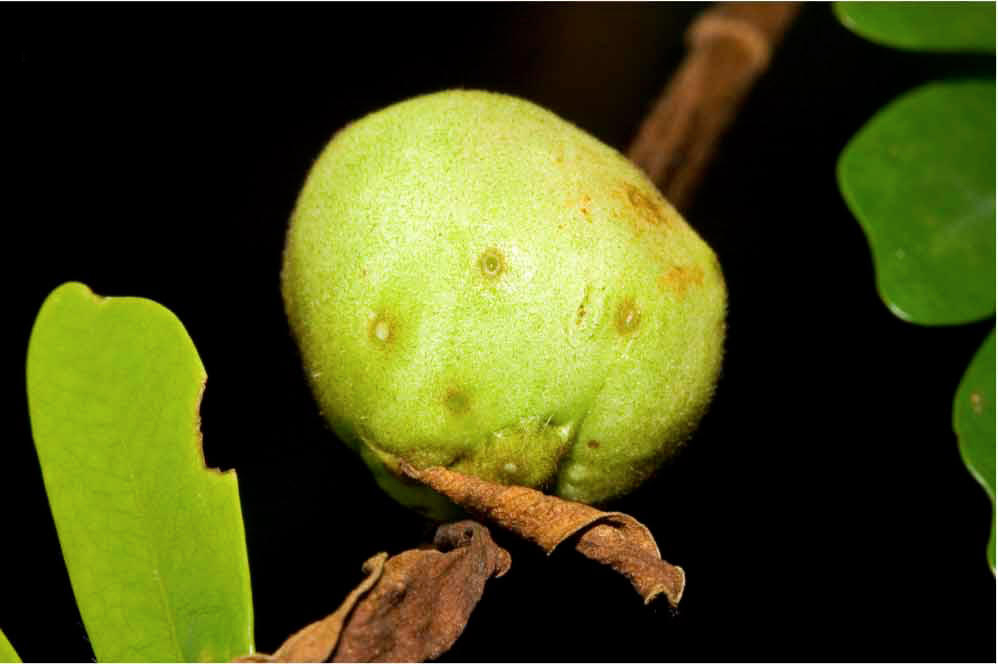|
Distribution |
Cameroon. The host,
Bikinia letestui letestui, a canopy tree of primary and older
secondary rainforest, is known from the coastal region of Cameroon,
Equatorial Guinea and Gabon (Wieringa, 1999) and hence the distribution
of this gall former is expected to follow that of its host (Rasplus et
al., 2011). |
 |
|
Biology |
Leaf gall former on Bikinia letestui (Pellegr.)
Wieringa subsp. letestui (Fabaceae: Caesalpinioideae). Gall
induction specifically targets the enlarged basal leaflet nectaries of a
modified leaf, which are associated with every flush of new leaves in
B. l. letestui. Their provision of extrafloral nectar attracts ants.
The ormyrid,
Ormyrus nkoloensis, is either a parasitoid or an inquiline of
Gallastichus. This
is the first recorded instance of a gall being induced in an extrafloral
nectary (Rasplus et al., 2011). |
|
References |
Rasplus, J.-Y., La Salle, J.,
Delvare, G., McKey, D. & Webber B. 2011.
A new afrotropical genus and species of Tetrastichinae
(Hymenoptera : Eulophidae) inducing galls on Bikinia (Fabaceae:
Caesalpinioideae) and a new species of Ormyrus (Hymenoptera: Ormyridae)
associated with the gall. Zootaxa
2907: 51–59.
Wieringa, J.J. 1999. Monopetalanthus exit. A
systematic study of Aphanocalyx, Bikinia, Icuria,
Michelsonia and Tetraberlinia (Leguminosae, Caesalpinioideae),
Wageningen Agricultural University Papers, Wageningen Agricultural
University, pp. 320. |
Credits
|
Photographs © Jean-Yves Rasplus (INRA).
|
|